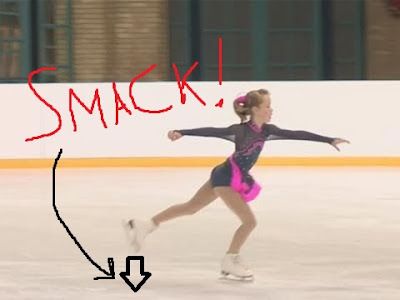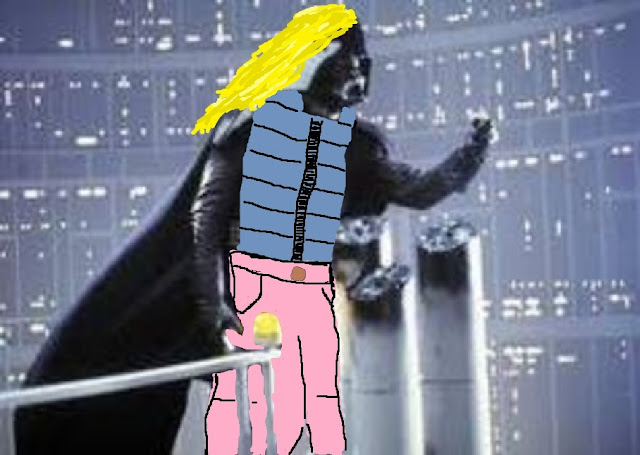Skating 101: "Patch"
I'm about to write a post about my transition to training on "patch" sessions at my rink, but for the uninformed then here's some info about what "patch" is.
The term 'patch' stems from the bygone age where skaters learned what were known as the "compulsory figures", which were used as part of competitions alongside the short and free programmes. People haven't stopped practising figures, but as they're no longer a component of the competitive schedule then the need to learn them (and thus their prevalence) has somewhat diminished. To put this a little more bluntly, figures are kind of what Latin is to modern languages: they represent a lot of the basic skills in application, but basically no one does them anymore. I've heard of some US adult skaters talk about doing them occasionally on their blogs, but that's basically pretty much the sum of my exposure to them.
Their removal doesn't mean they're without merit though, proponents will tell you that they reinforce good basics of skating technique, among other things, but I've never tried any so I can't give my own opinion. Last point: it's worth noting that compulsory figures were also where the term "figure skating" came from.
So what were they exactly? Compulsory figures were patterns you had to skate on the ice, for example: a figure of eight with turns thrown in at various points, and they required a lot of practising because you had to execute them flawlessly if you wanted to score well. To get all this practise in then you would be allocated a section of the rink as your "patch" for you to continually run through them in the pursuit of perfection. Some rinks would even draw circles on the ice using giant compasses to help you compare your skate tracings to a proper circle.
Ironically, the reliance on patch to practise was part of compulsory figures downfall. They were hideously time-consuming and expensive for the skaters to practise because of how perfect you had to get them. Furthermore, they took up a lot of time in competitive event scheduling (which had to cram in the short and free programmes as well) and they weren't even much fun for the spectators to watch (try looking some up on Youtube, it's somewhat impressive the first time but tedium sets in fast in my opinion).
So the term 'patch' as we use it today is completely anachronistic in many ways as it doesn't even reflect the disciplines that are practised in training sessions these days. Not being one for tradition then I get vaguely irked in the back of my mind every time someone uses the term 'patch', however, my rink officially refers to these sessions as "Skate Training" and that's a bit of a mouthful by itself so I've grudgingly come to accept use of the term 'patch' as a shorthand.
And that's it! "Patch" is just an old term for the practise session skaters use outside of public sessions. Simples!
The term 'patch' stems from the bygone age where skaters learned what were known as the "compulsory figures", which were used as part of competitions alongside the short and free programmes. People haven't stopped practising figures, but as they're no longer a component of the competitive schedule then the need to learn them (and thus their prevalence) has somewhat diminished. To put this a little more bluntly, figures are kind of what Latin is to modern languages: they represent a lot of the basic skills in application, but basically no one does them anymore. I've heard of some US adult skaters talk about doing them occasionally on their blogs, but that's basically pretty much the sum of my exposure to them.
Their removal doesn't mean they're without merit though, proponents will tell you that they reinforce good basics of skating technique, among other things, but I've never tried any so I can't give my own opinion. Last point: it's worth noting that compulsory figures were also where the term "figure skating" came from.
So what were they exactly? Compulsory figures were patterns you had to skate on the ice, for example: a figure of eight with turns thrown in at various points, and they required a lot of practising because you had to execute them flawlessly if you wanted to score well. To get all this practise in then you would be allocated a section of the rink as your "patch" for you to continually run through them in the pursuit of perfection. Some rinks would even draw circles on the ice using giant compasses to help you compare your skate tracings to a proper circle.
Ironically, the reliance on patch to practise was part of compulsory figures downfall. They were hideously time-consuming and expensive for the skaters to practise because of how perfect you had to get them. Furthermore, they took up a lot of time in competitive event scheduling (which had to cram in the short and free programmes as well) and they weren't even much fun for the spectators to watch (try looking some up on Youtube, it's somewhat impressive the first time but tedium sets in fast in my opinion).
So the term 'patch' as we use it today is completely anachronistic in many ways as it doesn't even reflect the disciplines that are practised in training sessions these days. Not being one for tradition then I get vaguely irked in the back of my mind every time someone uses the term 'patch', however, my rink officially refers to these sessions as "Skate Training" and that's a bit of a mouthful by itself so I've grudgingly come to accept use of the term 'patch' as a shorthand.
And that's it! "Patch" is just an old term for the practise session skaters use outside of public sessions. Simples!


Comments
Post a Comment